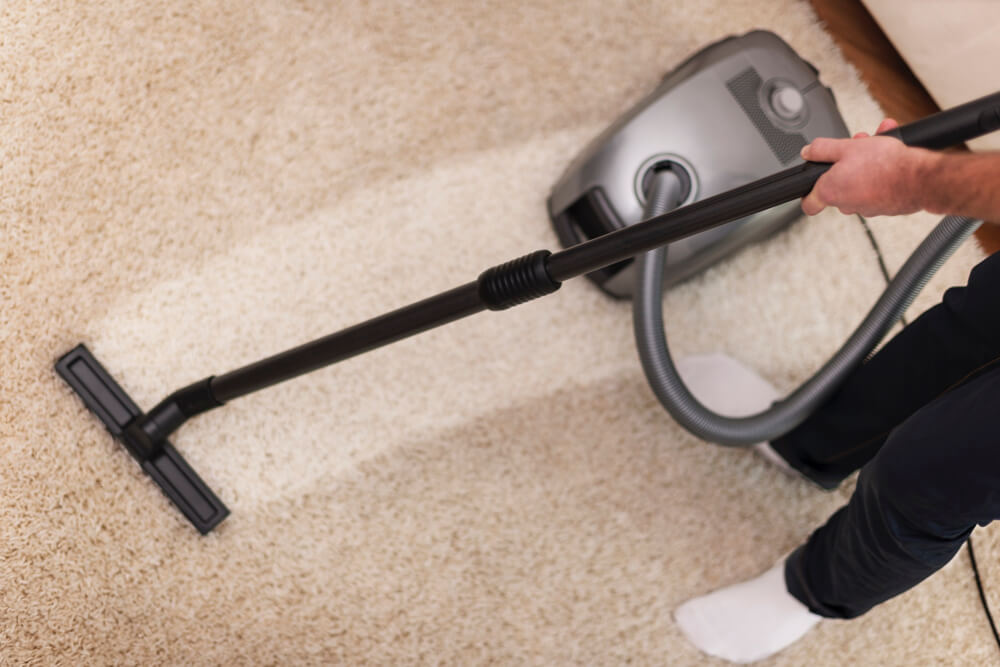To reverse vacuum cleaner airflow, simply switch the hose to the exhaust port. This will reverse the direction of the airflow, allowing you to blow air instead of suctioning it.
When cleaning surfaces such as carpets and floors, a vacuum cleaner is an essential tool. But have you ever found yourself in a situation where you need to blow air rather than suction it? Perhaps you want to remove debris from hard-to-reach corners, or blow dust off of surfaces that cannot be vacuumed? Fortunately, you can reverse your vacuum’s airflow to allow it to blow air instead of suctioning it. In this article, we’ll explore how to reverse vacuum cleaner airflow and the potential benefits of this technique.

Understanding Vacuum Cleaner Airflow
Vacuum cleaner airflow is an essential factor that determines the cleaning performance of a vacuum cleaner. In simple terms, it’s the flow of air that moves dirt and debris through the vacuum’s nozzle and filter into the dustbin. Typically, there are two types of vacuum cleaner airflow, direct airflow, and cyclonic airflow.
Direct airflow moves the air and debris directly from the nozzle to the dustbin, while cyclonic flow swirls the air to separate the debris from the air. Factors such as the suction of the motor, the filter quality, and the hose and nozzle design can affect the vacuum cleaner’s airflow and performance.
Additionally, it’s crucial to maintain optimal airflow by cleaning the dustbin, filter, and hoses regularly to prevent clogs. Proper airflow ensures efficient and effective cleaning, making vacuum cleaning a breeze.
Tools And Equipment Needed
Reversing the airflow in your vacuum cleaner can be a useful trick to have up your sleeve when you need to clean hard-to-reach areas. To get started, you’ll need a few tools and equipment, such as pliers, a screwdriver, and a new filter.
Pliers are used to loosen and tighten the clamps that hold the vacuum cleaner together. A screwdriver is needed to remove the screws that hold the filter in place. A new filter should be purchased to replace the old one.
Safety precautions must be taken when using tools to avoid injury. Wear gloves and goggles, and avoid loose clothing. By following these simple instructions, you’ll be able to significantly improve your vacuum cleaner’s suction power and clean even the tightest spaces with ease.
How To Reverse Vacuum Cleaner Airflow
Reversing the airflow on a standard vacuum cleaner is not a straightforward process as it requires modifications to the internal components. However, if you’re interested in the steps involved in attempting to reverse the vacuum cleaner airflow, here’s a general guide:
- Ensure Safety: Before attempting any modifications, make sure to unplug the vacuum cleaner from the power source to avoid any electrical accidents.
- Disassemble the Vacuum: Carefully disassemble the vacuum cleaner, following the manufacturer’s instructions or removing the necessary screws and parts. Keep track of the removed components for reassembly later.
- Locate the Motor: Find the motor, which is responsible for creating the suction and airflow in the vacuum cleaner. It is usually located near the intake port or inside the main body of the vacuum.
- Identify Motor Connections: Observe the motor connections to determine the wiring and airflow configuration. Note the existing direction of the airflow and how the motor is connected to the vacuum cleaner.
- Modify Motor Wiring: If you have knowledge of electrical circuits and are confident in your abilities, you can attempt to modify the motor’s wiring to change the direction of airflow. This process may involve switching the connections of the motor’s wires, but be aware that it can be challenging and may void the warranty or damage the vacuum.
- Reassemble the Vacuum: Once you have made any necessary modifications to the motor wiring, reassemble the vacuum cleaner carefully. Ensure that all components are properly aligned and securely fastened.
- Test the Reversed Airflow: Plug the vacuum cleaner back into a power source and test the airflow to see if it has been successfully reversed. Keep in mind that this modification may have unintended consequences and could potentially reduce the vacuum’s performance or cause other issues.
- Seek Professional Assistance (optional): If you are not confident in your ability to modify the vacuum cleaner or if you encounter difficulties during the process, it is recommended to seek professional assistance from a qualified technician who can assess the feasibility of reversing the airflow or suggest alternative solutions.
Note: It’s important to remember that attempting to reverse the airflow on a vacuum cleaner may not always be possible or advisable, as it may require complex modifications that could result in damage to the vacuum or pose safety hazards.
Testing The Reversed Vacuum Cleaner Airflow
Testing the reversed vacuum cleaner airflow is crucial to ensure optimal performance. To start, locate the exhaust vent on your vacuum. Then, cover it with your hand to check for suction. Next, disconnect the vacuum hose and attach a small object to the end.
Turn the vacuum on and check if the object is pulled towards the hose or pushed away. If it’s pushed away, the airflow is reversed. This could result in poor suction and clogs. To prevent this, make sure the hose is connected correctly and the vacuum filters are cleaned.
Testing and correcting the airflow will ensure efficient cleaning and a longer lifespan for your vacuum.
FAQ:
How do you reverse the airflow on a vacuum?
Why is my vacuum blowing air out the side?
Can you reverse a vacuum motor?
How do you redirect airflow?
How do you change the direction of airflow?
Conclusion
In the world of vacuum cleaners, there are plenty of interesting mods and tweaks that you can employ to improve the functionality of your machine. One such modification is the reversal of the vacuum cleaner airflow. This simple hack lets you take advantage of the suction power of your vacuum cleaner without needing to roll the cleaner back and forth to pick up dust particles.
By flipping the airflow over, you can achieve a whole new level of cleaning power and enjoy a much more comfortable and enjoyable cleaning experience. The process is easy to follow, and there are plenty of online resources available to help you with it.
Now that you know how to reverse vacuum cleaner airflow, why not give it a try and see the results for yourself? You won’t regret it!
